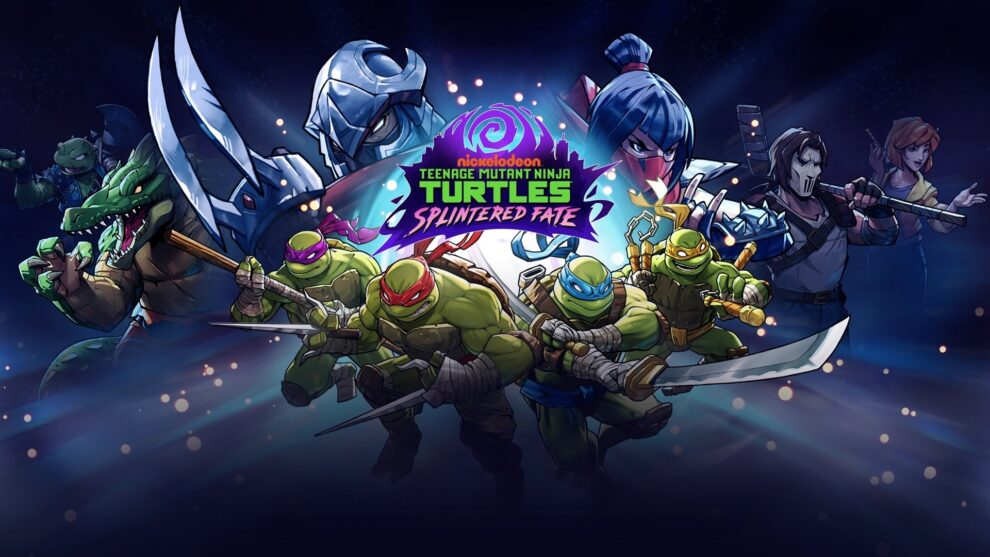Teenage Mutant Ninja Turtles: Splintered Fate emerges as an unexpected triumph, proving that sometimes the best surprises come from the most unlikely places. Released on November 6, 2024, this $30 action roguelike from Super Evil Megacorp demonstrates that with the right blend of creativity and respect for source material, even a mobile game developer’s first Steam release can capture lightning in a bottle.
Drawing inspiration from the critically acclaimed Hades, Splintered Fate transplants the familiar roguelike formula into the vibrant world of the Teenage Mutant Ninja Turtles. Players navigate through four distinct biomes, battling across New York City’s rooftops and streets while facing off against iconic adversaries like the Foot Clan and Mousers. What could have been a simple clone instead emerges as a thoughtful adaptation that leverages its source material to create something fresh and engaging.
The game’s combat system stands as its crown jewel, cleverly avoiding the common roguelike pitfall where overpowered builds lead to monotonous gameplay. Rather than relying on traditional cooldown timers, special attacks and tools must be charged through successful basic combat moves. This ingenious design choice ensures that even as players develop increasingly powerful ability combinations, they must remain engaged with the fundamental combat mechanics, creating a satisfying blend of skill and strategy.
Each of the four turtles brings their distinct personality to the battlefield through unique playstyles and abilities. The game’s progression system introduces an innovative twist through its Mastery and Inspiration mechanics. While each turtle excels in their specialized areas, they can borrow Masteries from their brothers as Inspirations, leading to creative hybrid builds that reflect the siblings’ cooperative nature. For instance, Raphael’s critical hit expertise can be combined with Michelangelo’s sweeping nunchuk attacks, creating devastating area-of-effect combinations.
The power system shows admirable boldness in its design, embracing the inherent wackiness of the TMNT universe. Players can create outlandish combinations, from ricochet-enhanced shurikens that chain lightning between enemies to attacks that simultaneously inflict fire, water, ice, and dark magic effects. Rather than constraining players with rigid balance concerns, Splintered Fate celebrates the joy of discovery and experimentation.
Multiplayer functionality adds another layer of appeal, allowing up to four players to team up either locally or online. The chaos of combat escalates appropriately with multiple players, but the game maintains its core strategic elements while fostering genuine moments of camaraderie. The revival system, where surviving players can resurrect their fallen companions by clearing a room, creates intense moments of collaborative triumph.
For players seeking greater challenges, the game introduces Portal and Gauntlet systems that increase both difficulty and rewards. These options provide natural progression paths for solo players testing their skills and groups looking to push their limits together. The risk-reward dynamic adds meaningful depth to the replay value, encouraging players to experiment with increasingly ambitious builds and strategies.
However, Splintered Fate isn’t without its imperfections. The user interface lacks some of the polish found in genre-leading titles, particularly in terms of build planning and stat tracking. The absence of a comprehensive character stat display during runs forces players to rely on estimation rather than precise information. Similarly, the system for unlocking hybrid powers lacks transparency, making it difficult to plan builds effectively.
The boss fight system shows some inconsistency in variety and challenge levels. While the first boss boasts four distinct variants, later bosses have fewer alternatives, and the final boss’s multiple forms feel oddly similar to each other. The difficulty spikes between variants can sometimes feel arbitrary, potentially leading to frustration during otherwise promising runs.
The game’s narrative presentation, while capturing the essence of the TMNT universe, occasionally overplays its hand with excessive quipping and repetitive dialogue. Drawing inspiration from the IDW comics series, the game strikes a slightly more mature tone than some adaptations, but the constant banter can become tiresome during extended play sessions.
Despite these shortcomings, Splintered Fate succeeds where many licensed games fail, delivering an experience that both honors its source material and stands on its own merits as a compelling action roguelike. The developer’s commitment to future updates, including promises of new playable characters, levels, and bosses, suggests the game will only improve with time.
For fans of the genre or the franchise, Splintered Fate offers a surprisingly robust package that transcends its mobile origins. While it may not quite reach the polished heights of its inspirations, it carves out its own identity through clever design choices and genuine appreciation for what makes both roguelikes and the Teenage Mutant Ninja Turtles entertaining. In the crowded landscape of roguelike games, Splintered Fate proves there’s always room for innovation when developers understand both their source material and their genre.
















Add Comment